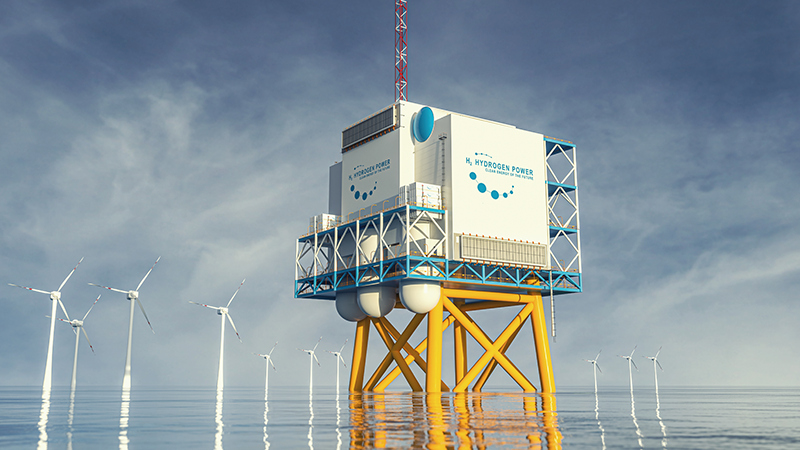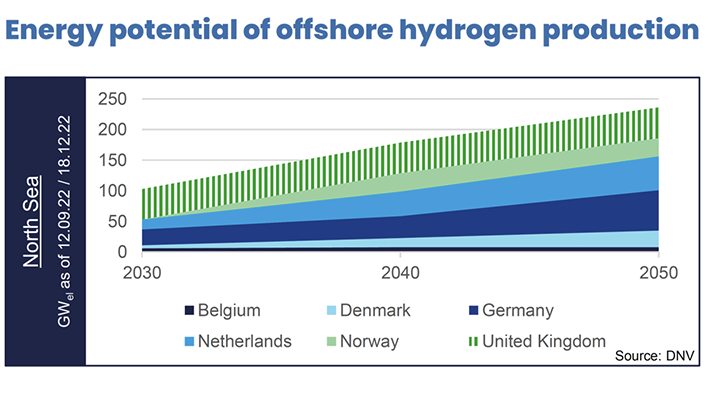Harnessing Offshore Hydrogen: A New Era in Clean Energy Production
Written on
Chapter 1: The Dawn of Offshore Hydrogen Production
The United Kingdom is on the verge of a significant achievement next winter: it will produce its first kilogram of offshore hydrogen. This development places the UK in a competitive landscape, as countries worldwide strive to showcase the economic feasibility of generating clean fuel from offshore resources.

To lower costs associated with converting water into fuel—especially at distances exceeding 100 kilometers from the shore—economies of scale are essential. This ambitious project necessitates considerable investments, a robust supply chain, supportive governmental policies, and extensive engineering know-how.
Among the various global players advancing toward full-scale demonstrations, the UK’s Dolphyn Hydrogen is notable. In November, the company will initiate a series of trials off the coast of Wales, marking a crucial step toward validating the industry’s potential.
Stephen Matthews, CEO of Dolphyn Hydrogen, highlights the importance of this milestone, stating, “This will represent the first offshore hydrogen production in the UK. We have moved past the feasibility stage and are now tasked with proving our ambitious goals.”
Section 1.1: A Global Movement Towards Offshore Hydrogen
Countries worldwide are ramping up their efforts to mass-produce offshore hydrogen. The Dutch government has recently unveiled plans for a significant 500MW offshore hydrogen facility in the North Sea, while France's Sealhyfe project began small-scale production last June. Concurrently, the UK government is actively collaborating with industry leaders to define its offshore hydrogen pipeline and storage strategies, supporting initiatives like the one in Scotland that aims to start production by 2025.

Driving the push for offshore hydrogen is the global commitment to reducing carbon emissions. Various initiatives are underway, such as America’s Hydrogen Shot strategy and Japan’s updated hydrogen plan, which allocates over $100 billion for investment over the next 15 years. Offshore hydrogen is poised to deliver green hydrogen—the cleanest fuel—on a large scale. The principle is simple: utilize renewable energy from wind or wave farms to power electrolysis, which separates water into hydrogen and oxygen. The resultant hydrogen can then be transported back to land for immediate use or storage, with only water vapor released as a byproduct.
In this video, "April 2024: Challenges and Opportunities with Geologic Hydrogen," experts discuss the hurdles and prospects of harnessing hydrogen from geological sources, providing insights that complement the offshore hydrogen narrative.
Subsection 1.2: Overcoming Challenges in Hydrogen Production
Dolphyn Hydrogen has dedicated five years to refining its system design and has sought a global patent to safeguard its innovative approach to offshore hydrogen generation and transport. The upcoming trial in Milford Haven, Wales, will concentrate on testing the electrolyzer, the system's critical component. Although wind turbines will not be included initially, this trial on a barge will yield valuable data for marine motion analyses and evaluate desalination processes.
By 2026, the company aims to establish a full-scale demonstrator equipped with a 10MW turbine, comparable in size to London’s Gherkin skyscraper. The subsequent phase will involve creating multiple facilities capable of powering towns or small cities, starting in the UK and expanding internationally.
Stephen Matthews asserts that offshore hydrogen production can be economically advantageous compared to traditional methods, highlighting that transporting hydrogen via pipelines is more cost-effective than transmitting electricity back to shore. Additionally, offshore hydrogen projects can circumvent the complexities associated with grid connections and address the intermittency challenges linked to renewable sources.
“With this technology, we’ll produce green hydrogen at the same cost as natural gas,” Matthews explains. “Offshore hydrogen is more affordable than most people realize, provided we can scale up quickly.”
Chapter 2: Innovating Hydrogen Storage and Transportation
In the webinar titled "[IMPACT Webinar] From Vision to Action: Realizing Hydrogen Potential through Concrete Developments," industry leaders explore actionable strategies to unlock hydrogen's potential, addressing the critical aspects of storage and transportation.
Green hydrogen can be generated offshore when wind conditions are favorable, stored on land, and utilized as required, rather than solely when weather permits. This strategy aims to significantly mitigate the intermittency issues that renewable energy sources face and present a more cost-effective solution for energy storage. While challenges exist, they are primarily engineering-related rather than inherent flaws of renewables, particularly in relation to weather dependency.
Laying the Foundation for Offshore Hydrogen Growth
Despite existing challenges, optimism abounds regarding the prospects of offshore hydrogen production. Engineers foresee numerous opportunities for addressing technical issues and designing resilient infrastructures capable of withstanding harsh marine environments. Transitioning to offshore hydrogen presents a promising avenue for professionals from related sectors to apply their expertise effectively.
Ultimately, obtaining offshore licenses and conducting thorough testing will be vital in propelling offshore hydrogen projects forward. Pioneers in this field stand to set a precedent for widespread adoption, unlocking the vast potential of offshore hydrogen production as a critical component of the green energy landscape.